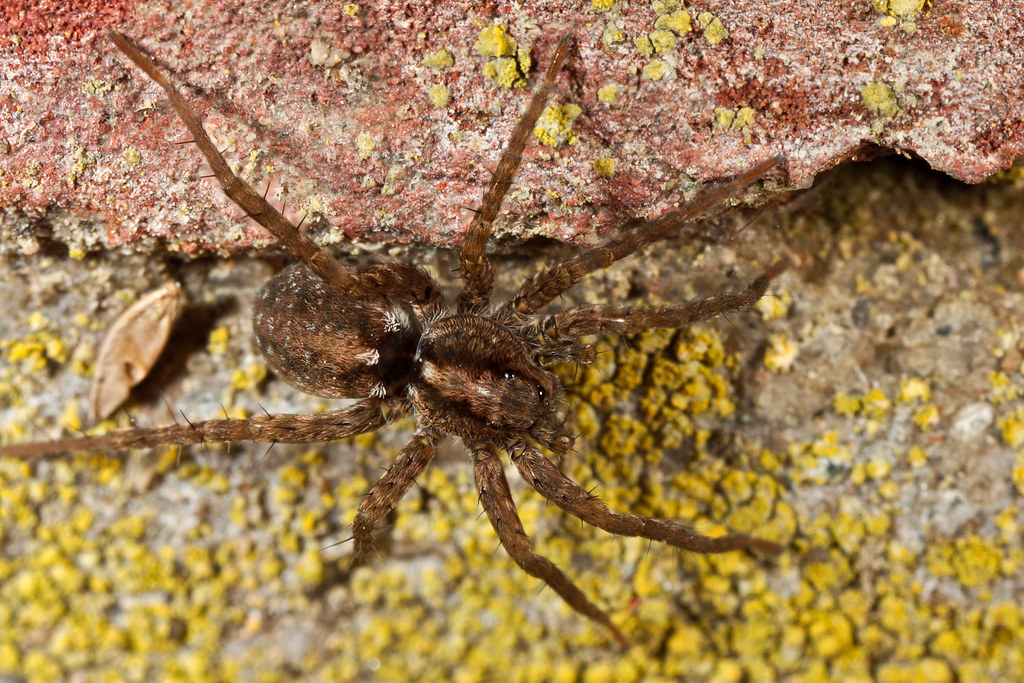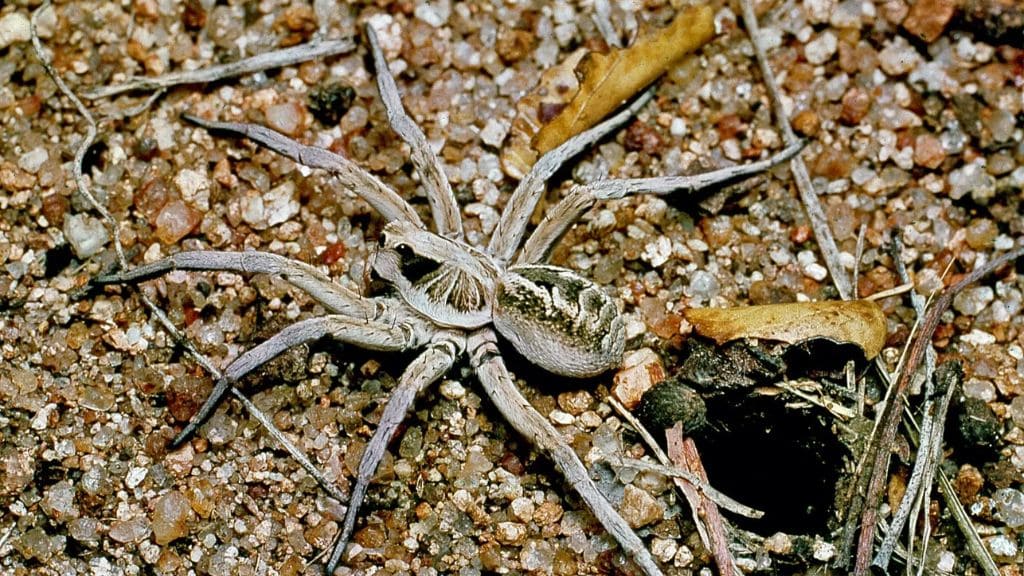Wolf spiders are among the most intriguing and diverse arachnids, known for their impressive hunting skills and complex behaviors. Their unique adaptations make them fascinating subjects for study, especially when examining the stark differences between the sexes. Understanding these differences not only sheds light on their reproductive strategies but also reveals the evolutionary pressures that have shaped their behavior and physical traits.
In the world of wolf spiders, males and females exhibit distinct characteristics that play crucial roles in their survival and reproduction. From the strikingly different physical features to their varied life spans and mating behaviors, these differences are pivotal to their life cycles. Males, with their specialized pedipalps, and females, with their extended nurturing role, each contribute to the species’ continuity in their own unique ways.
This article delves into the remarkable distinctions between male and female wolf spiders, offering a detailed look into their anatomy, behaviors, and ecological roles. By exploring these differences, we gain a deeper appreciation for how these spiders thrive and adapt in their environments, enriching our understanding of these remarkable creatures.
Physical Differences: Male vs Female Wolf Spiders

One of the most striking aspects of wolf spiders is the physical differences between males and females. These differences play crucial roles in their reproductive behaviors and survival strategies.
Pedipalps: The Male’s Distinctive Feature
- Male Pedipalps: Male wolf spiders exhibit enlarged, swollen pedipalps at the front of their bodies. These structures are crucial for reproduction as they contain sperm, which the males transfer to the females during mating.
- Function and Structure: The pedipalps of males are often more noticeable due to their size and shape. They are used as reproductive organs during courtship and mating.
Size and Coloration
- Size Variations: Generally, female wolf spiders are larger than males. This size difference is especially apparent when the spiders are observed in their natural habitats.
- Color Patterns: While both males and females can exhibit various color patterns, females often have more muted colors, aiding in camouflage as they carry egg sacs.
Behavioral Differences: How Males and Females Interact
Behavioral differences between male and female wolf spiders are equally intriguing. These behaviors are linked to their roles in reproduction and survival.
Mating Rituals
- Male Behavior: Males engage in elaborate courtship rituals to attract females. These rituals often involve vibratory signals or “dancing” to demonstrate their fitness and readiness to mate.
- Female Response: Females are usually more selective and may show preference for certain males based on their courtship displays.
Post-Mating Behavior
- Male Fate: After mating, male wolf spiders typically die. This phenomenon, known as semelparity, is common in many spider species and is linked to their reproductive strategy.
- Female Longevity: Females, on the other hand, can live for up to five years. They invest significant energy in nurturing their offspring, which contributes to their longer lifespan.
Reproductive Strategies and Lifecycles

The reproductive strategies of wolf spiders are designed to maximize their chances of survival and the success of their offspring.
Egg Sac Management
- Female Responsibilities: Female wolf spiders carry their egg sacs attached to their abdomens. They will protect these sacs and, once the spiderlings hatch, may carry them for a week or two.
- Spiderling Care: This maternal care ensures that the young spiders are protected and have the best chance of survival.
Male Reproductive Role
- Sperm Transfer: Males transfer sperm to the female’s abdomen using their pedipalps. This process is critical for fertilization and successful reproduction.
Adaptations for Survival

Both male and female wolf spiders have evolved specific adaptations that enhance their survival in diverse environments.
Hunting Techniques
- Active Predation: Wolf spiders are known for their hunting skills. They actively search for and stalk their prey, which includes insects and other small arthropods.
- Camouflage: Both sexes use camouflage to blend into their surroundings, aiding in both predation and avoiding predators.
Environmental Adaptations
- Habitat Preferences: Wolf spiders can be found in various habitats, including forests, grasslands, and deserts. Their adaptability to different environments is a testament to their evolutionary success.
Comparative Analysis of Lifespan and Reproductive Success

Understanding the comparative lifespans and reproductive success of male and female wolf spiders provides insight into their evolutionary strategies.
Male Lifespan and Reproduction
- Short-Lived: Males have a shorter lifespan compared to females, often living only a few months. Their primary focus is on mating and ensuring their genetic contribution to the next generation.
Female Lifespan and Offspring Production
- Longer Life: Females live longer and invest more in offspring production. Their ability to carry and protect egg sacs is crucial for the survival of their young.
Common Misconceptions and Fascinating Facts

Wolf spiders are often misunderstood. Clearing up misconceptions and highlighting fascinating facts can enhance our appreciation of these remarkable arachnids.
Misconceptions
- Danger to Humans: Despite their fearsome appearance, wolf spiders are not aggressive toward humans and their bites are generally harmless, though medical attention is advised if a bite becomes infected.
Interesting Facts
- Unique Hunting Skills: Wolf spiders have exceptional hunting skills and are known for their speed and agility.
- Diverse Species: There are many species of wolf spiders, each with unique adaptations and behaviors.
Observational Insights and Personal Experiences

Drawing from my own experiences observing wolf spiders in their natural habitats provides a personal touch to this exploration.
Field Observations
- Behavior in the Wild: Observing wolf spiders in the wild offers insights into their hunting strategies, mating behaviors, and interactions with their environment.
Challenges and Rewards
- Challenges: Studying these spiders involves overcoming challenges such as their elusive nature and the difficulty of observing them in their natural habitats.
- Rewards: The rewards of studying wolf spiders include gaining a deeper understanding of their complex behaviors and adaptations.
FAQs about Male vs Female Wolf Spiders

1. What are the main physical differences between male and female wolf spiders?
Answer:
- Pedipalps: Male wolf spiders have enlarged, swollen pedipalps, which are used for transferring sperm during mating. Females have pedipalps but without the swelling.
- Size: Females are generally larger than males.
- Coloration: Males and females may have different color patterns, with females often having more muted colors for camouflage.
2. How do male wolf spiders contribute to reproduction?
Answer:
Male wolf spiders use their enlarged pedipalps to transfer sperm to the female’s abdomen during mating. This is their primary role in reproduction. After mating, males typically die.
3. What happens to female wolf spiders after mating?
Answer:
Female wolf spiders carry the fertilized eggs in a sac attached to their abdomen. After the spiderlings hatch, the female may carry them on her back for a week or two until they are ready to fend for themselves.
4. How long do wolf spiders live?
Answer:
Female wolf spiders can live up to five years. Males have a much shorter lifespan, typically living only a few months after reaching maturity.
5. What are the hunting behaviors of wolf spiders?
Answer:
Wolf spiders are active hunters. They do not use webs but instead actively search for and stalk their prey. They rely on their speed and agility to capture insects and other small arthropods.
Conclusion
Male and female wolf spiders exhibit fascinating differences that reflect their distinct roles in the ecosystem. From their physical characteristics to their behaviors and reproductive strategies, these differences highlight the adaptability and resilience of wolf spiders. As an avid spider enthusiast, I hope this exploration enriches your understanding of these remarkable arachnids and inspires further curiosity about the natural world.
For those interested in learning more about spiders and their behaviors, I encourage exploring academic resources and field studies to gain a deeper appreciation of these incredible creatures.


